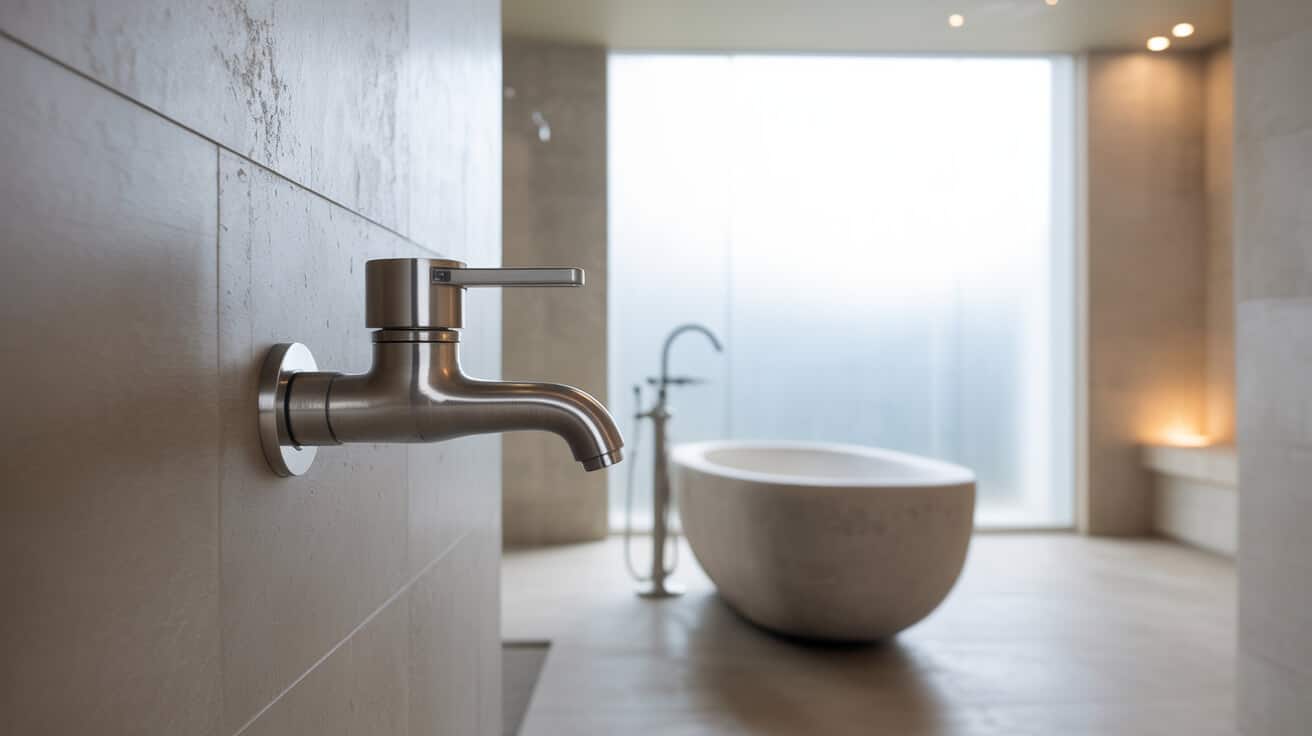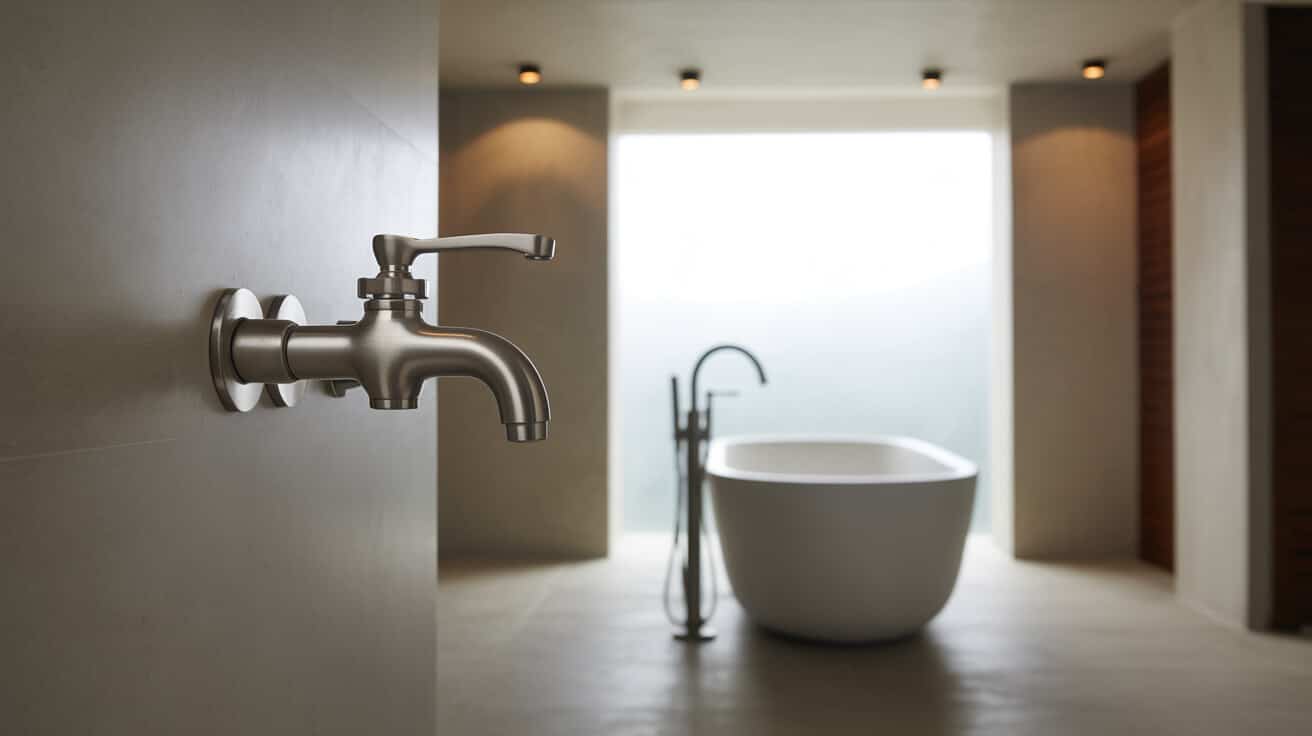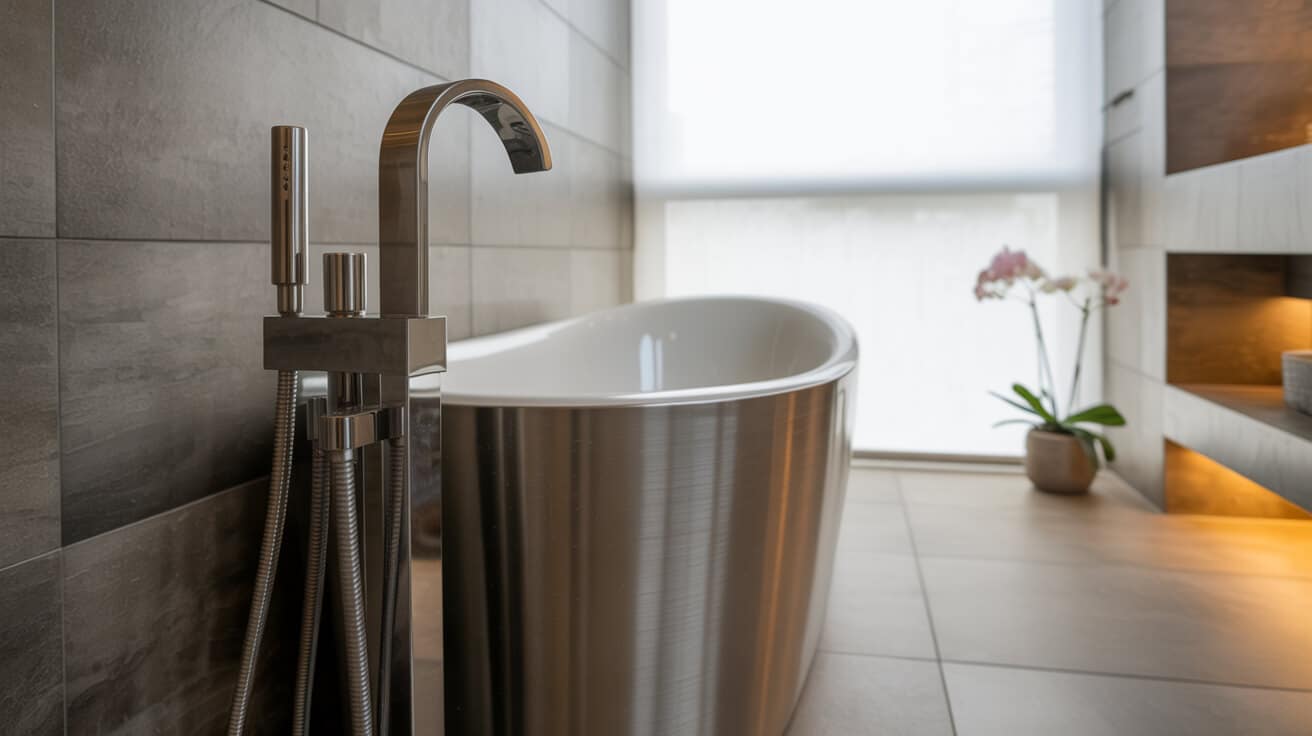In contemporary building infrastructure, the presence and performance of valves serve as a silent safeguard against unseen risk. For property managers, landlords, owners, and facilities engineers, valves transform theoretical system designs into practical tools for safety, asset protection, and regulatory assurance. The operational expertise delivered by companies such as Plumbers 4U is built on transparency, competence, and a proactive approach to monitoring, maintenance, and documentation of your critical control points. Valves are seldom noticed until failure or emergency intervenes; yet it is their subtle influence that supports safety certifications, uninterrupted occupancy, and managed liability across single properties or vast asset networks. Correct valve specification and stewardship enhance regulatory compliance, conserve water and energy, and underpin the reliability of your built environment.
Lead
Valve assemblies constitute the decision-making nodes within any plumbing or heating system, acting at once as regulators, gatekeepers, and fail-safes. Their design, installation, and ongoing use shape the experience of system users, the scope of property risk, and the efficiency with which resources are consumed or safeguarded. Meticulous attention to valve selection and record-keeping is not simply best practice, but a precondition for legal protection, insurance coverage, and the proactive management of your assets or organisation.
Etymology or name origin
The noun “valve” traces etymological origin to the Latin “valva,” describing a leaf of a double door—an apt metaphor for the function of opening or closing a passage. The earliest recorded valves in plumbing consisted of simple plugs, tilting discs, or swinging gates, fabricated from wood, clay, or bronze, appearing in the water systems of ancient Rome, classical Greece, and the hydraulic works of Qin dynasty China. Over centuries, the term broadened to encompass a wide array of mechanical control devices in engineering, medicine, and industry, yet the core principle—regulated passage of fluids—remained central.
Overview / context
Valves occupy a pivotal position in plumbing and heating infrastructure, acting wherever systems require transmissive, isolating, or protective controls for flow. Their omnipresence extends from point-of-entry stopcocks in domestic dwellings to complex control banks in commercial plantrooms. Their operation—manual or automatic—governs the safety, efficiency, and serviceability of your properties, influencing cost, compliance, and comfort for every stakeholder.
Role in fluid distribution systems
In water supply, valves enable segmentation for repairs, planned maintenance, or upgrades, minimising service loss and cost. central heating systems rely on valves for zoning, temperature control, and pressure management. Waste and venting circuits employ specialised variants to ensure sanitary function and environmental protection.
Connection to broader building infrastructure
Valves tie plumbing and heating into the wider structure of your property, linking mains, hot water generators, distribution branches, radiators, underfloor heating, and sanitary appliances. In larger installations, they interface with pumps, backflow prevention devices, filtration systems, and energy management tools, serving as the linchpin for systemic resilience and reactivity.
Relevance to property management and compliance
Legal and insurance frameworks increasingly require explicit valve mapping, asset logs, and regular inspection cycles. A well-maintained valve schedule delivers not just functional system advantages, but regulatory protection—supporting licencing, insurance renewals, and the safeguarding of your tenants or building users.

History
Ancient and early plumbing systems
The archaeological record documents the use of plug valves in the plumbing of the Roman Empire, constructed from bronze and lead to channel water for public baths, aqueducts, and urban sanitation. While rudimentary in operation and lacking today’s standards for sealing and reliability, these early devices formed the template for system partitioning and emergency shut-off.
Industrial revolution and standardisation
Advancements in metallurgy and machining during the 18th and 19th centuries allowed for the development of threaded, diaphragm, and wedge-type valves, each adaptable to new forms of water supply, steam heating, and sewer management. Factory production enabled scaling, bringing consistent quality and widespread adoption across domestic and commercial markets. The codification of pressure, temperature, and hygiene standards led to uniform threads, standardised testing, and the birth of regulatory oversight in plumbing device manufacture and application.
Modern advancements and smart valves
The late 20th century introduced materials such as brass alloys, stainless steel, advanced polymers, and PTFE-based seals. Simultaneously, health and safety legislation spurred the adoption of anti-scald, double-check, and thermostatic mixing designs. Smart valve technologies—incorporating sensors, electric actuation, and remote monitoring—have begun their ascent in managed properties, hospitality, healthcare, and large multi-tenant facilities, enhancing control, comfort, and compliance capabilities for your organisation.
Concept and description
Valves in plumbing systems function according to carefully engineered mechanical principles, each mechanism tailored to a specific operational context. The typical assembly includes a robust body enclosing a seat—onto which the disc or gate closes—a stem passing through the bonnet, linked to external actuation by handle, lever, or motor. Seals or gaskets prevent extrusion of fluid, while the end connections interface with pipes, tanks, or fixtures.
Basic construction and internal components
- Valve body: The principal housing, stress-rated and chemically compatible with the system medium.
- Closure element: May be a ball, disc, gate, diaphragm, or plug—types selected for response requirements and frequency of actuation.
- Seat: Machined surface or resilient ring providing a mating face for closure elements.
- Stem/shaft: Transmits force from actuator to closure element.
- Bonnet: External cap supporting the stem, easily removed for maintenance on service valves.
- Seals/gaskets: Elastomeric, PTFE, or composite to prevent leakage and accommodate thermal expansion.
Actuation and control mechanisms
Activation may be manual (lever/handwheel), thermal (wax capsules or bimetallic strips), pressure-driven (spring or diaphragm), or electric/pneumatic (in control, safety, or smart zoning applications). The response mode determines not only the suitable product but also implications for maintenance, documentation, and compliance.
Integration within heating and hot/cold water circuits
Plumbing valves intervene at every transition—property main entry, riser, branch, appliance feed, or waste exit. Each installation is specified based on pressure, fluid, temperature, frequency of use, and accessibility, with legal mandates often applicable for certain positions (stopcock, TPRV, TMV).
Physical and chemical materials
- Metallic: Brass, bronze, and stainless steel combine longevity, chemical inertness, and reliable machinability.
- Plastic and composites: Suited to lower-temperature circuits and locations free from direct sunlight or mechanical risk.
- Elastomerics/PTFE: Utilised in seats, gaskets, and moving parts for sealing and reduced friction in repeated actuations.
Manual vs automated operation
For modest residential needs, manual or thermostatic controls remain common. In property portfolios require greater oversight, automated valves permit responsive zoning, scheduled maintenance, and swift intervention, enhancing your capacity for risk management and comfort delivery.
Functional applications
Isolation and shut-off
Isolation valves provide system segmentation, allowing you to direct maintenance, upgrades, or emergency action without system-wide shutdown or compromise. Typical installations include mains entry, branch circuits, loops, and final appliance feeds.
Pressure management and regulation
Pressure-reducing valves (PRV), pressure-relief and temperature-pressure relief valve (TPRV) assemblies safeguard against mechanical or thermal overloads, preventing damage to heating circuits, unvented cylinders, and connected appliances.
Flow direction and mixing
Flow-regulating valves (e.g., blending or diverter) enable dynamic closure or redirection of fluids, facilitating routine switching between circuits or balancing supplies for comfort and compliance.
Temperature safety and anti-scald
Thermostatic valves blend hot and cold feeds to minimise risk of scalding, serving as mandated protection in homes with children, healthcare, and landlord-licenced properties.
Backflow prevention
Check, double-check, and non-return valve configurations maintain unidirectional flow, precluding contamination of potable water sources—a non-negotiable compliance target for every responsible property operator.
System protection and emergency operation
Strategically placed emergency shut-offs and relief valves minimise escalation from minor faults to catastrophic failure, reducing property risk and safeguarding your compliance with insurer requirements.
Heating system control (zoning, underfloor, radiator circuits)
Zoning valves, particularly motorised or thermostatic, enable fine-tuned service, energy conservation, and tenant-specific comfort targeting in multifamily or multi-use buildings.
Classifications and types
Isolation devices
- Ball: Rapid shutoff, low friction, minimal pressure drop.
- Gate: Full bore, suited to low-velocity distribution, slower to operate.
- Globe: Precise regulation, higher resistance to flow.
- Butterfly: Space and weight efficient for higher-diameter settings.
- Lever/handle: Simple and reliable input for manual control.
Non-return and check valves
- Single check: Defends against minor backpressure.
- Double check: Enhanced security, typically for higher-risk zones.
- Swing, lift, spring-loaded: Varied in mechanism for location, maintenance, and regulatory fit.
Pressure reducing, pressure relief, and temperature & pressure relief valves
- PRV: Automatically adjusts system pressure.
- SRV: Limiting safety to respond to overpressure.
- TPRV: legally required for unvented cylinders—a hallmark of compliance with health and property protection.
Mixing technologies
- Thermostatic mixing valve: Maintains stable, blended outlet temperature.
- Blending: Useful for complex heating networks or specialist equipment.
Zone and control options
- TRV: Autonomous or guided room or appliance-level heating adjustment.
- Motorised: Linked to controls for timed, programmed, or scheduled operation—a mark of advanced portfolio management.
Specialty variants
- Air admittance/anti-vacuum: Critical for stack ventilation, foul air prevention.
- Bypass: Maintains minimum flow.
- Float/fill: Manages incoming supply in tanks.
- Drain-off: Permits full or sectional system emptying.
Packaged assemblies
Valve banks, isolation manifolds, and tamper-resistant modules offer rapid servicing, asset traceability, and simplified compliance for multi-tenant, hospitality, or commercial clients.

Systems, tools, and methodologies
Installation and commissioning
Meticulous planning—factoring size, flow direction, accessibility, and system compatibility—underpins successful instal. commissioning includes live system testing, leak checks, and the issue of legal certificates by professionals such as Plumbers 4U.
Pressure and leak testing
These routines employ water, compressed air, or inert gas with calibrated gauges and marked intervals, producing documentary evidence of compliance and functional safety.
Survey, asset logging, and documentation
A comprehensive mapping of every valve—location, type, specification, and date of installation or service—supports proactive asset management. Our services will maintain and update your property logbooks, aiding your compliance and operational readiness.
Service tools
Installers rely on an array of professional tools, including specialist wrenches, gland packing, torque-controlled drivers, and sealant systems. Diagnostic technologies may include ultrasonic detectors, thermal imaging, and water quality testers.
Maintenance protocols
Manufacturers and standards organisations offer prescriptive schedules for inspection, exercise, lubrication, and planned replacement, reducing unplanned outages or system degradation.
Troubleshooting common issues
Loss of actuation, persistent leaks, or misaligned closure generally stem from material fatigue, debris intrusion, or incorrect installation. Each symptom serves as an indicator of deeper system or usage issues that informed professionals will diagnose and resolve in a scheduled, minimally disruptive manner.
Upgrade and replacement workflows
Changing codes, ageing infrastructure, or new resident needs may call for selective replacement or wholesale upgrade. Our services consult, specify, and execute such changes, minimising system impact and maximising comfort, safety, and compliance.
Stakeholders and industry entities
Engineers, installers, and technical staff
In every step of design, fitting, and ongoing operation, your system’s reliability is only as strong as the skills and certifications of the professionals responsible for its integrity.
Owners, tenants, landlords, and property managers
From controlling cost and risk to maximising property value and occupant comfort, the incentives for well-managed valve systems span every sector. Legislative change and growing technical complexity place increasing emphasis on property manager and owner education.
Approval bodies, governmental agencies, and standards organisations
Accredited entities (e.g., WRAS, Gas Safe Register, WaterSafe, manufacturer-backed installer programmes) serve as authoritative sources on permissible products, correct installation, and policy evolution.
Manufacturers and supply chain
Product development and aftersales support constitute the backbone of trouble-free system life, with brand standards ensuring interchangeability, warranty support, and guidance for compliant specification.
Training and continuing education providers
A dynamic regulatory environment elevates continuing professional development, with courses and qualification systems used to upskill professionals and maintain a competent workforce.
Legal, regulatory, and ethical context
Water supply regulations
Compliant product selection and installation is enforced under the Water Supply (Water Fittings) Regulations 1999, which require “no undue waste, misuse, or contamination” in all potable or process water circuits. Professional approval (e.g., WRAS) is generally required to demonstrate conformity.
Building Regulations
- Part G: Stipulates hygienic hot and cold water installation, including required fittings and safety devices.
- Part H: Regulates drainage and wastewater handling.
- Part L: Confines energy loss and promotes conservation.
- G3: Mandates unvented hot water cylinder installation to include temperature and pressure relief, anti-legionella measures, and strict asset registration.
Certification schemes
TMV2 and TMV3 standards apply for anti-scald valve installations in private, landlord, and healthcare settings. G3 qualification is essential for legal compliance in unvented cylinder and safety valve installation or repair.
Maintenance logs, compliance checks, and documentation
Asset lifecycles and maintenance histories inform legal defences and insurance claims, with top-tier professionals appending unique asset IDs, service intervals, and inspection documentation, sometimes via digitised platforms managed by our services.
Insurance, liability, and documentation
Coverage is contingent on demonstrated code conformity, professional installation, and maintained records. Inadequate or missing documentation can void tenant, owner, or manager protections and trigger remediation at your expense.
Stakeholder responsibilities
Obligations are allocated according to the occupancy, legal standing, and operational practice of each party within the building, ensuring collective responsibility for system safety and regulatory observance.
Ethical considerations
From water conservation to vulnerable resident safety, transparent, code-compliant valve management speaks both to individual property success and to wider social and ecological good.
Performance metrics, data, and measurement
Flow, pressure, and temperature standards
Valves are marked with class ratings in litres per minute (L/min), bar (pressure), and °C (temperature), enabling professionals and operators alike to select, document, and service to context.
Durability and lifespan
Material advances and manufacturing controls now allow predictable service intervals, which are matched against industry replacement schedules or in-service visual/functional inspections.
Testing and benchmarking
Third-party and in-house tests benchmark reliability and code fit: seat leakage under pressure, thermal cycling, and resistance to water hammer or freezing.
Inspection and reporting
Maintenance cycles and inspection logs, whether digital or paper-based, provide demonstrable evidence of compliance, inform upgrade priorities, and reinforce asset value for owners and managers alike.
Challenges, barriers, and limitations
Technical failures and system incompatibility
Corrosion, incomplete closure, and inappropriate specification introduce risk—water damage, system shutdown, or contamination events that are disruptive and costly.
Compatibility and modification constraints
Legacy properties, especially those constructed before code harmonisation, may present challenges requiring adaptation, non-standard fittings, or specialist interventions.
Economic and access issues
Owners and managers balance initial procurement cost against long-term maintainability and availability of spare parts, choosing between brand-certified and generic alternatives according to risk appetite and intended asset life.
Skills and training
A competent workforce underlies system performance, asset protection, and customer trust, with failure to train or certify rapidly compounding organisational risk.
Liability and documentation risk
Modern regulatory and insurance frameworks penalise non-compliance or missing documentation, so organisations such as Plumbers 4U emphasise exhaustive handover, asset tracking, and proactive issue identification.
Impact, influence, and legacy
The public health, safety, and engineering advances of the industrial age owe much to simple, reliable valve technology. The sector’s continued professionalisation now marries modern engineering with cultural appreciation for technical transparency, environmental sustainability, and skilled practice.
Tables of historical recall:
| Era | Valve Innovation | Legacy Impact |
|---|---|---|
| Roman Antiquity | Plug/Disc Valves | Urban sanitation, public water supply |
| Industrial Age | Cast/trade-standardised | Expansion of heating, clean water, industry |
| Modern | Thermostatic, anti-scald | Insurance-compliant, anti-contamination |
| Contemporary | Automated, low-lead | Data-driven maintenance, risk management |
Future directions, cultural relevance, and design discourse
Material and engineering breakthroughs promise more sustainable, resilient, and environmentally neutral valve assemblies, tailored for evolving codes and greater user safety. Digital asset management and regulatory alignment trends are expected to accelerate, bridging gaps in property licencing, maintenance, and insurance certainty. Culturally, recognition of the discipline, knowledge, and social responsibility invested in valve management is rising, reinforcing the value of properly trained engineers and transparent, company-led stewardship. New narratives of building health, occupant security, and ecological custodianship are implicit in every well-maintained and correctly installed valve—revealing the silent ties between engineering detail and daily life.

